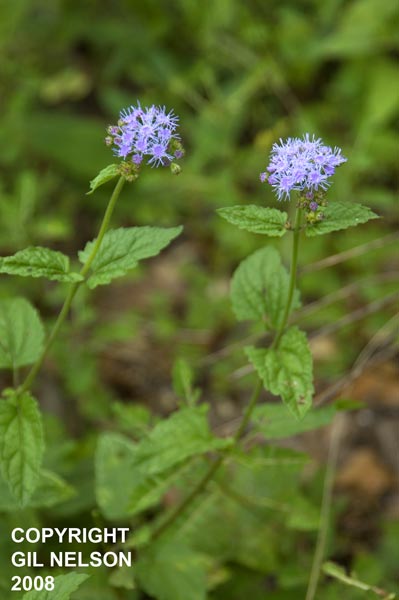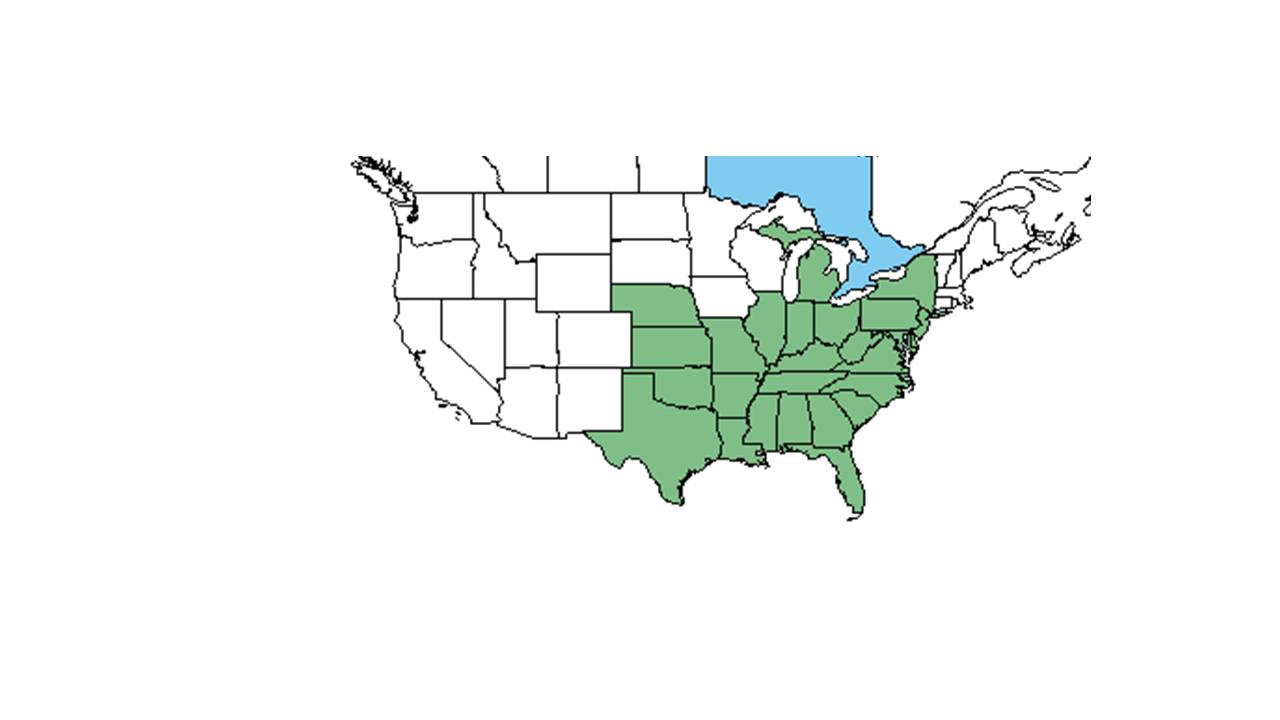Difference between revisions of "Conoclinium coelestinum"
(→Description) |
|||
| Line 26: | Line 26: | ||
==Ecology== | ==Ecology== | ||
===Habitat=== <!--Natural communities, human disturbed habitats, topography, hydrology, soils, light, fire regime requirements for removal of competition, etc.--> | ===Habitat=== <!--Natural communities, human disturbed habitats, topography, hydrology, soils, light, fire regime requirements for removal of competition, etc.--> | ||
| + | This species has been observed growing in dry woods, hammocks, along the edges of river banks, floodplains, and streams, slash pine-palmetto woodlands, and pine woodlands (FSU Herbarium). It is also found in areas disturbed by humans such as roadsides, ditches, and clearings (FSU Herbarium). Thriving in light from shade to full sun, this species grows in moist sands or drying loamy sands and has even been recorded to grow in water along edges of springs (FSU Herbarium). | ||
| + | |||
===Phenology=== <!--Timing off flowering, fruiting, seed dispersal, and environmental triggers. Cite PanFlora website if appropriate: http://www.gilnelson.com/PanFlora/ --> | ===Phenology=== <!--Timing off flowering, fruiting, seed dispersal, and environmental triggers. Cite PanFlora website if appropriate: http://www.gilnelson.com/PanFlora/ --> | ||
===Seed dispersal=== | ===Seed dispersal=== | ||
Revision as of 12:43, 10 July 2015
| Conoclinium coelestinum | |
|---|---|

| |
| photo by Gil Nelson | |
| Scientific classification | |
| Kingdom: | Plantae |
| Division: | Magnoliophyta - Flowering plants |
| Class: | Magnoliopsida – Dicotyledons |
| Order: | Asterales |
| Family: | Asteraceae ⁄ Compositae |
| Genus: | Conoclinium |
| Species: | C. coelestinum |
| Binomial name | |
| Conoclinium coelestinum (L.) DC. | |

| |
| Natural range of Conoclinium coelestinum from USDA NRCS Plants Database. | |
Contents
Description
Common Name: blue mistflower
This species is abundant in moist banks of rivers, streams, and floodplains (FSU Herbarium).
Distribution
Ecology
Habitat
This species has been observed growing in dry woods, hammocks, along the edges of river banks, floodplains, and streams, slash pine-palmetto woodlands, and pine woodlands (FSU Herbarium). It is also found in areas disturbed by humans such as roadsides, ditches, and clearings (FSU Herbarium). Thriving in light from shade to full sun, this species grows in moist sands or drying loamy sands and has even been recorded to grow in water along edges of springs (FSU Herbarium).